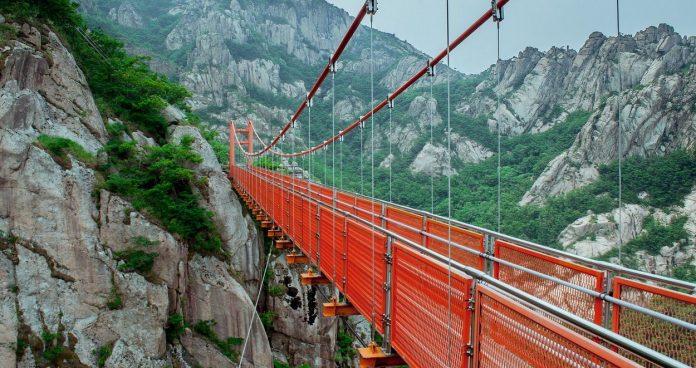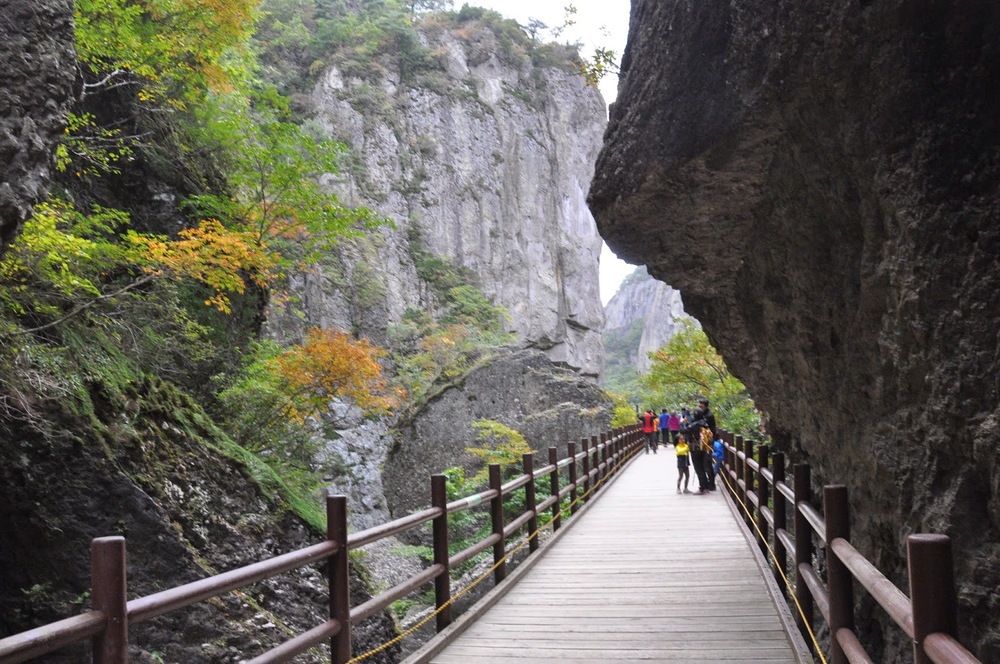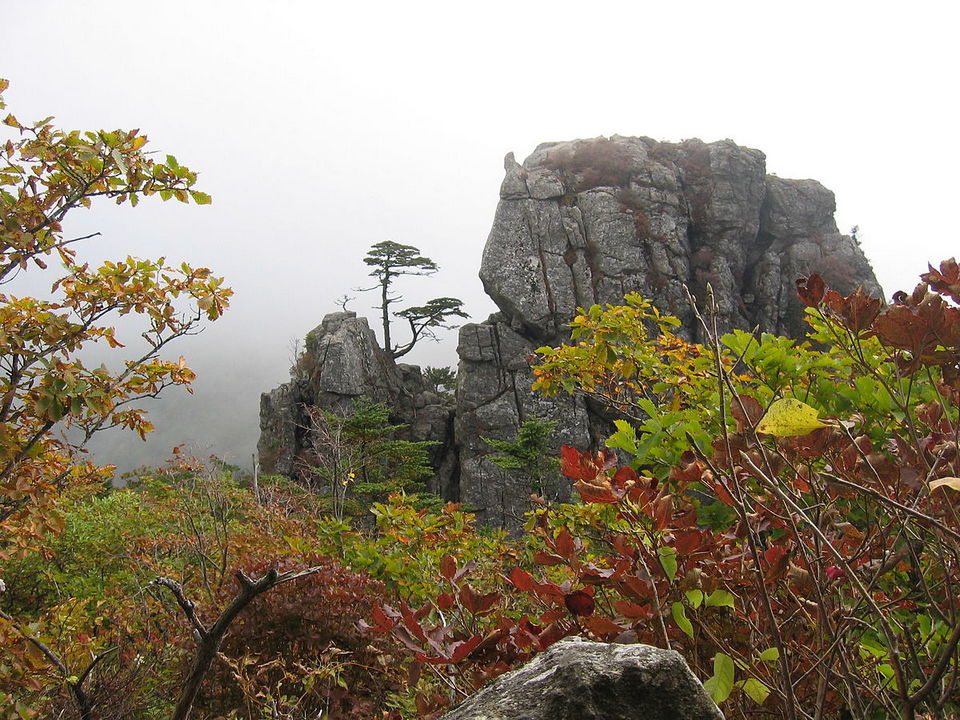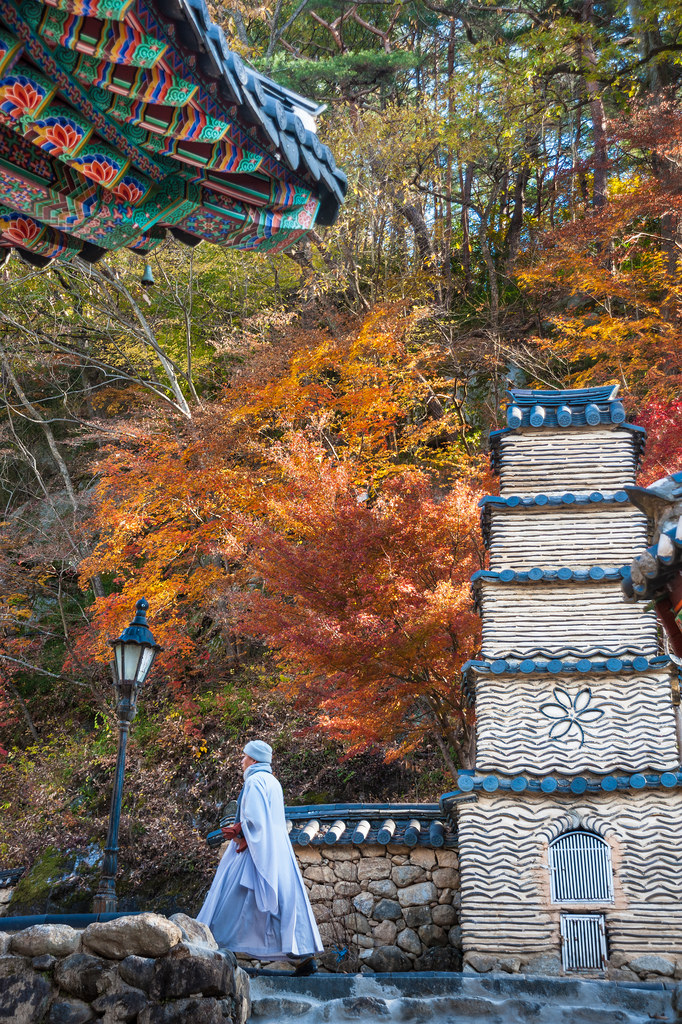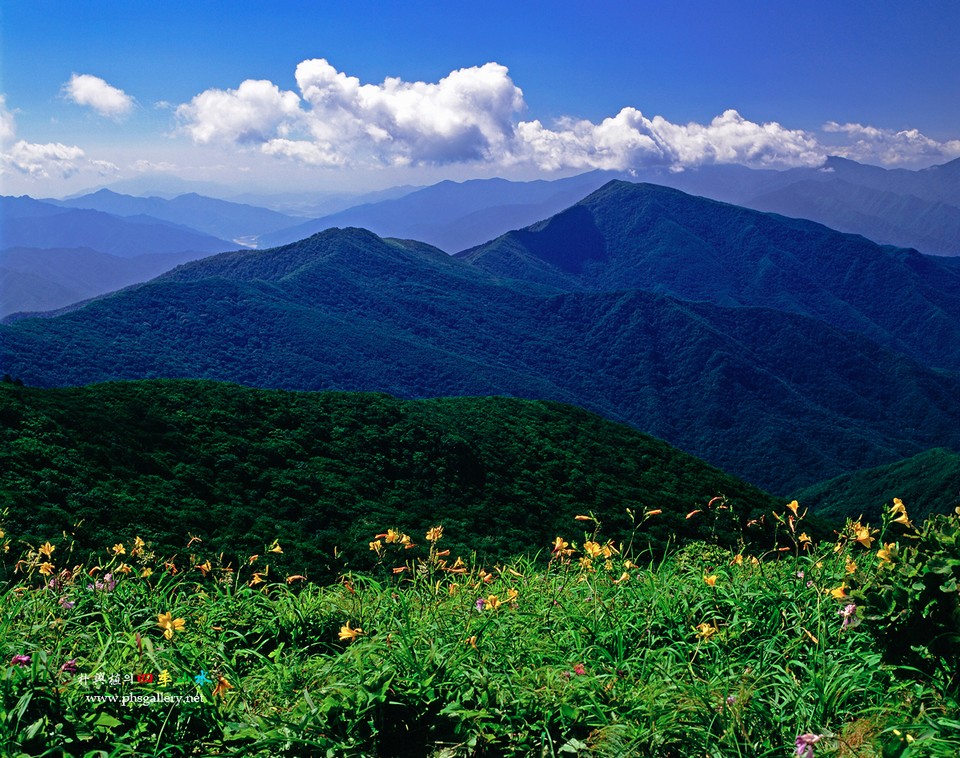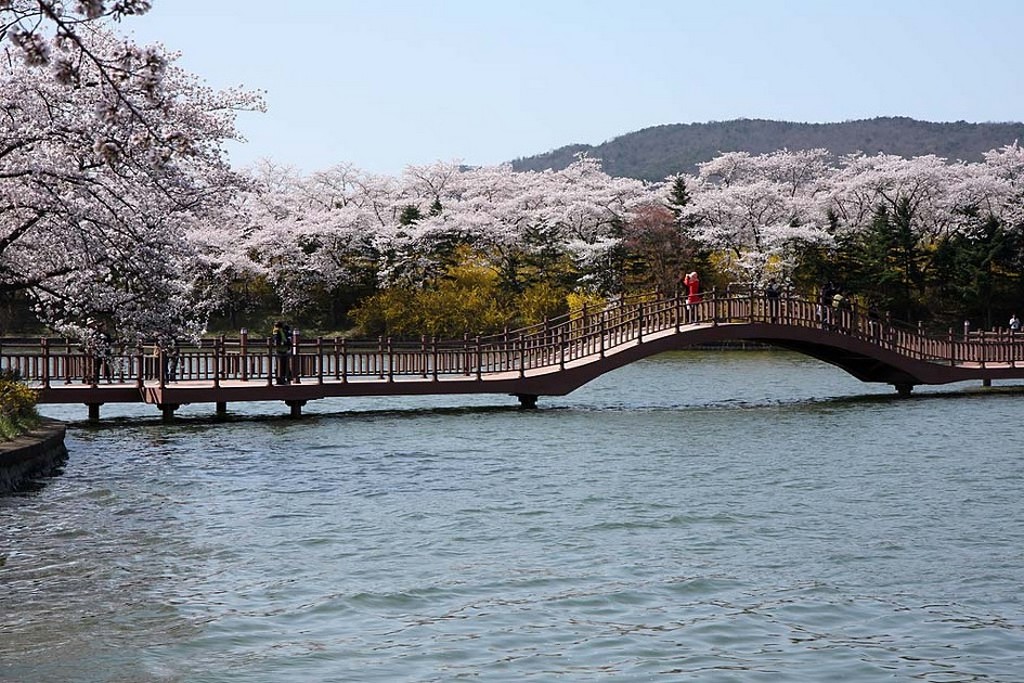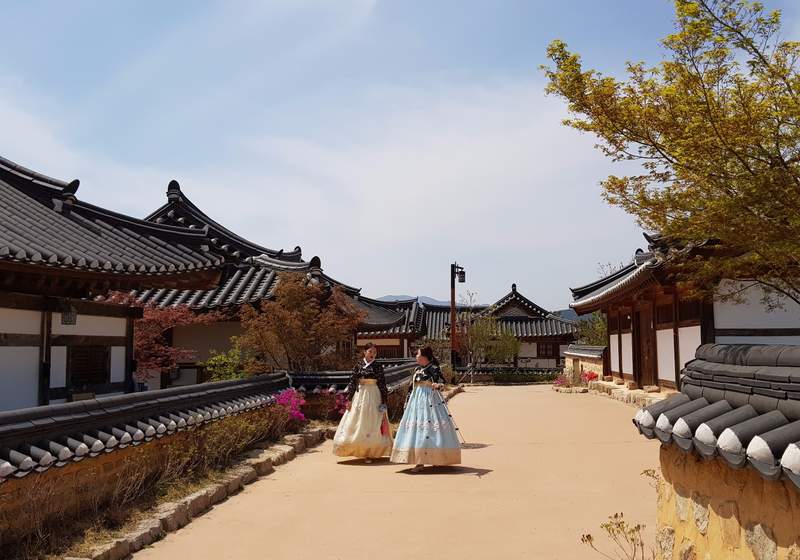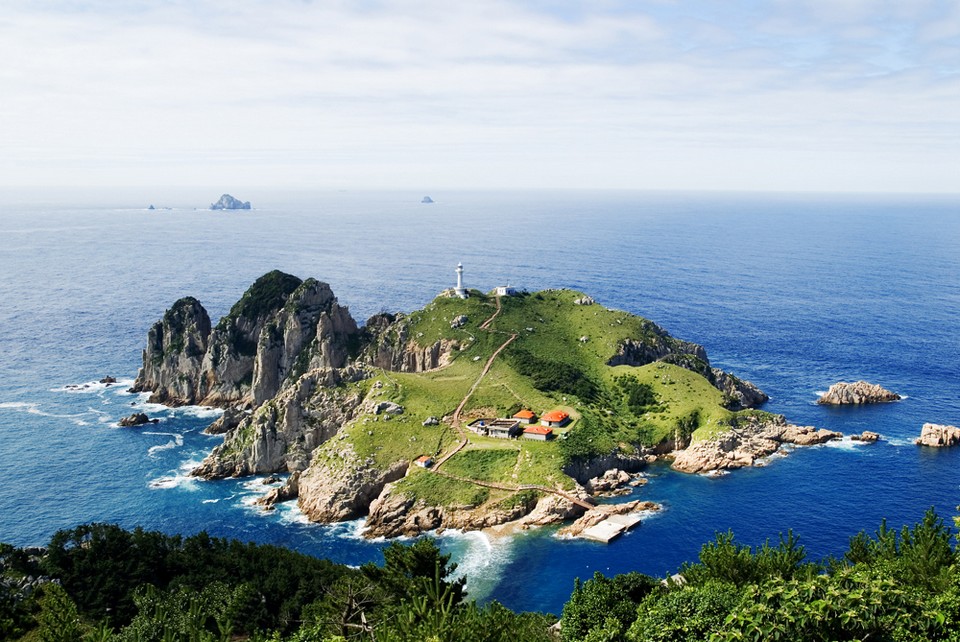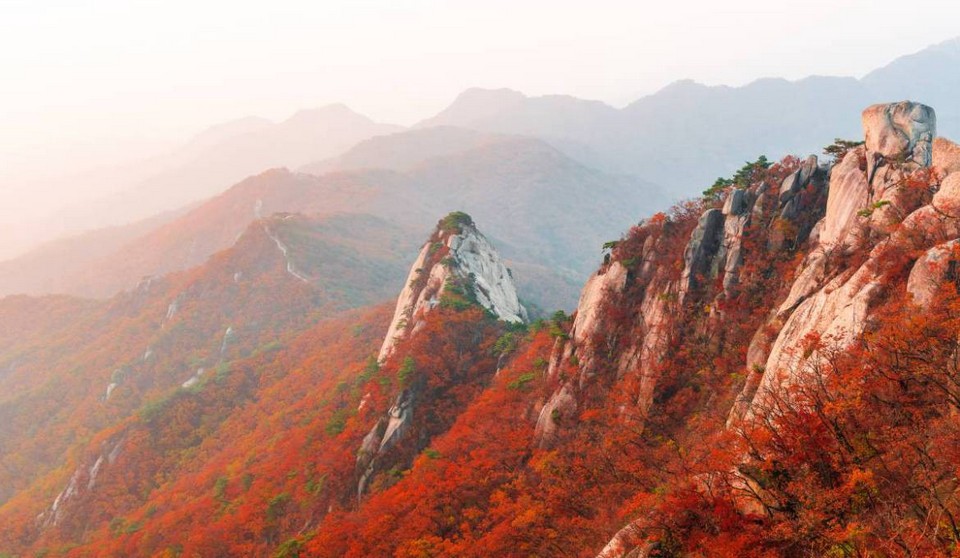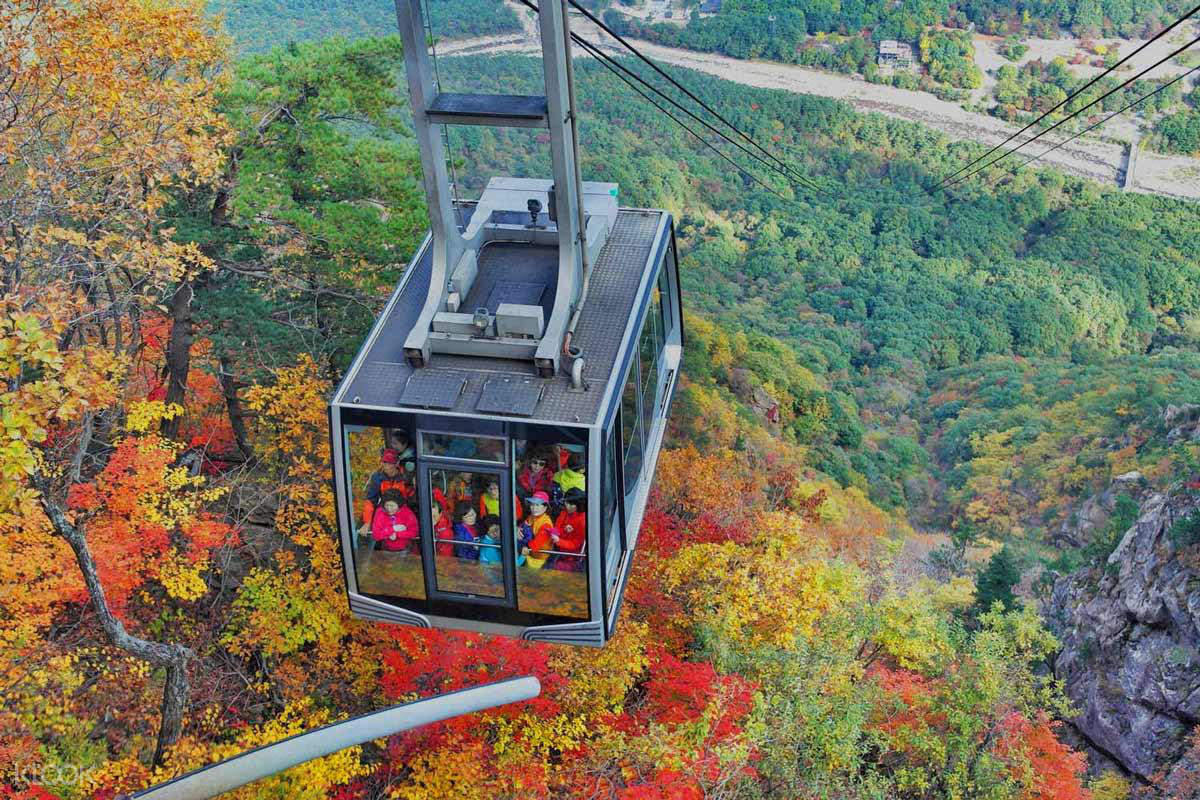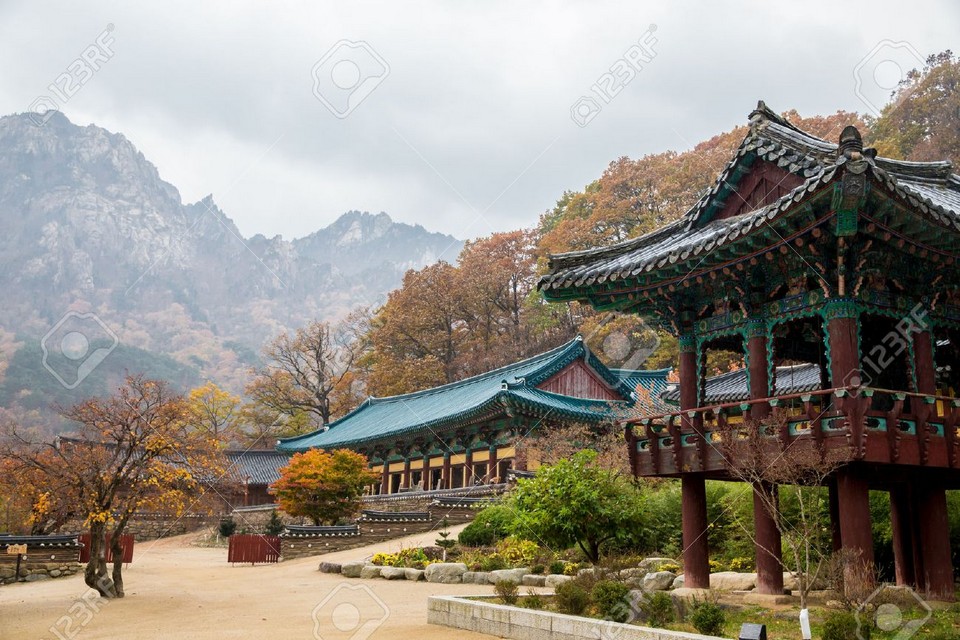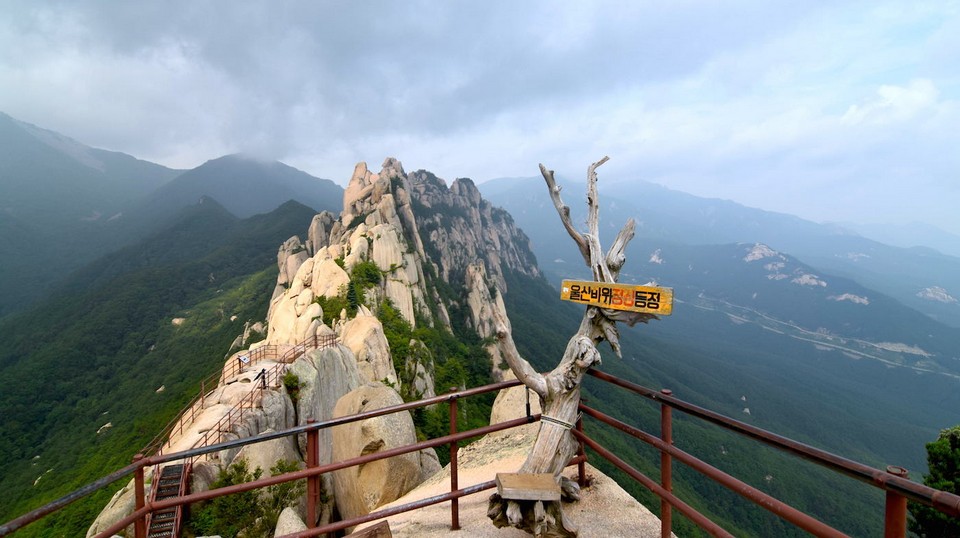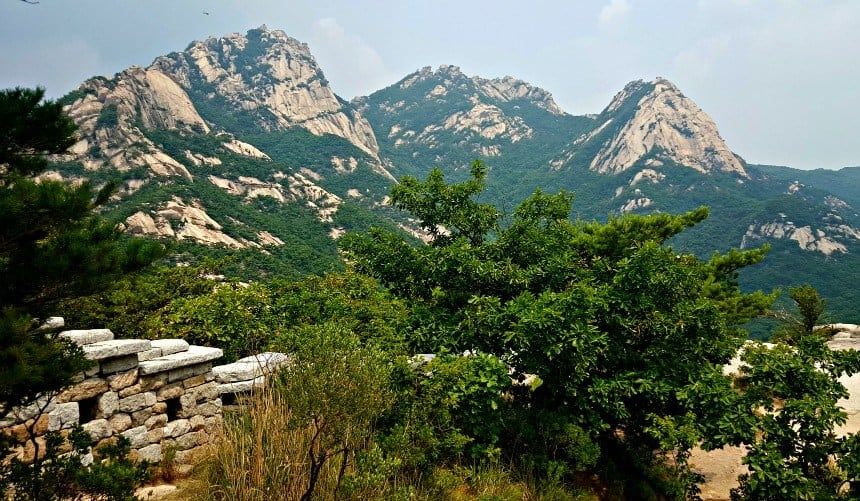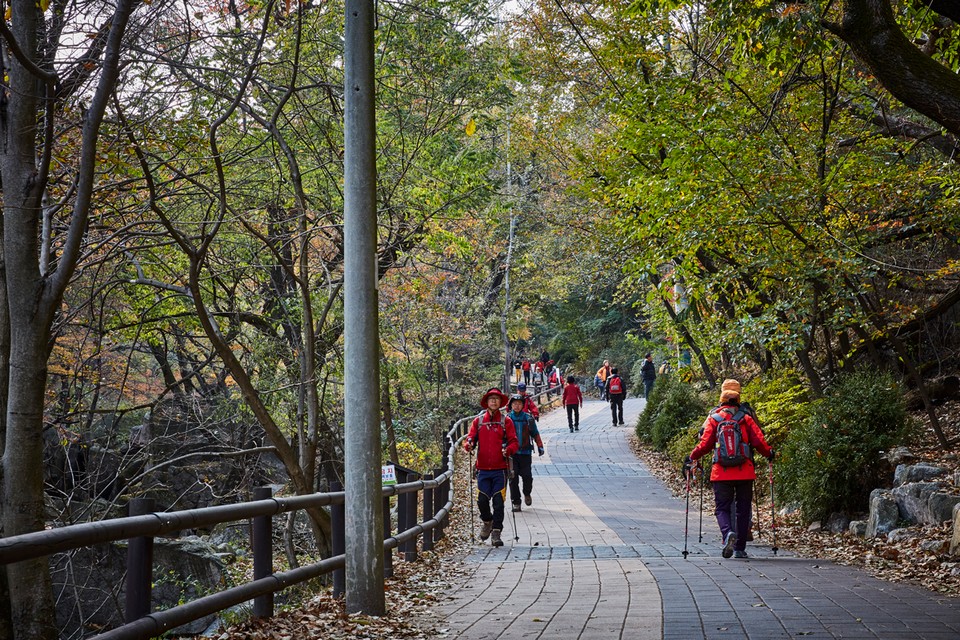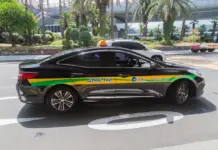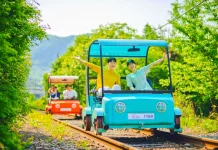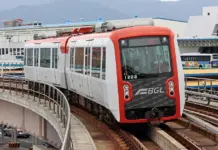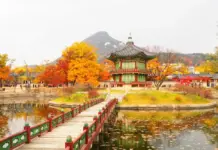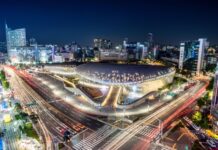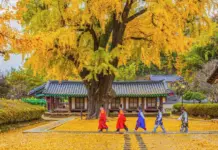South Korea is famous for many beautiful, majestic and unique landscapes, with its own characteristics of the frigid zone, this is also a prominent tourist attraction of the land of kimchi. And when you come here, visitors can not ignore the beautiful national parks, full of breath of nature, especially in the autumn. With over 20 national parks spread throughout the country, let’s joing Living Nomads to find out which national parks are famous and attract the most tourists in Korea. Now, check out our suggested the top South Korea national parks (Top Korea national park) and best national parks in South Korea as below.
- Seoraksan autumn 2025 — Admiring fall foliage & Cable car riding in Seoraksan National Park in autumn
- Top 10 best places to see wildlife in Asia
- Discover Namsangol Hanok village: Preserving the quintessence of Korean culture
- Jeju airport to city transfer: How to get from Jeju airport to Seogwipo & island center
- The FULLEST Jeollanam Do travel guide: How to get there, best time to visit, top things to do in Jeollanam Do & MORE
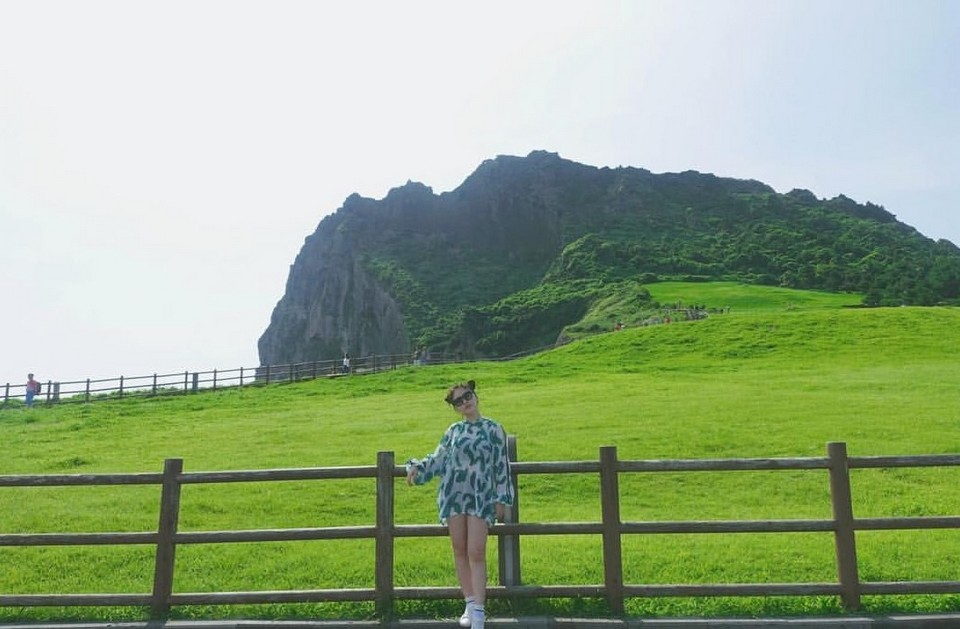
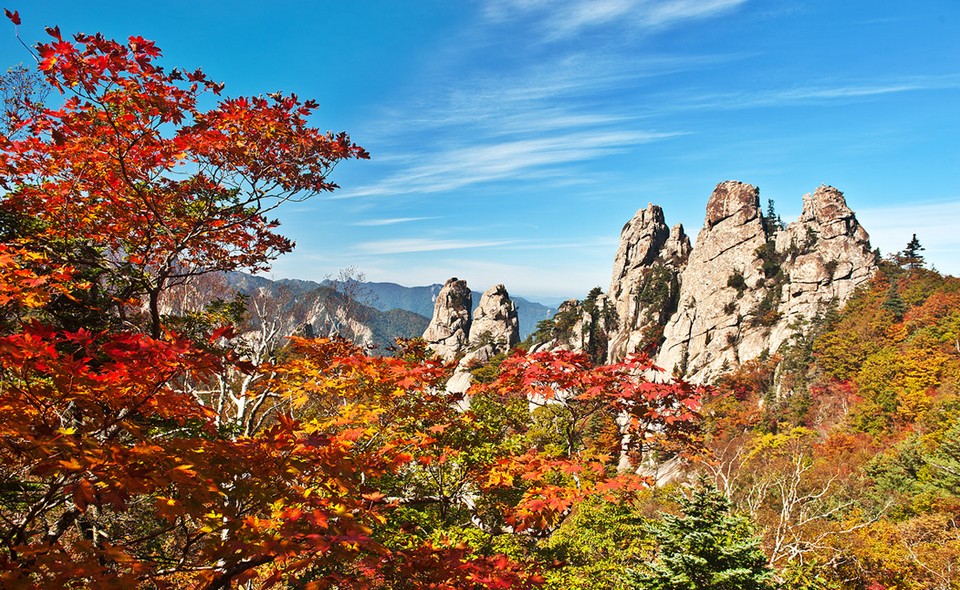
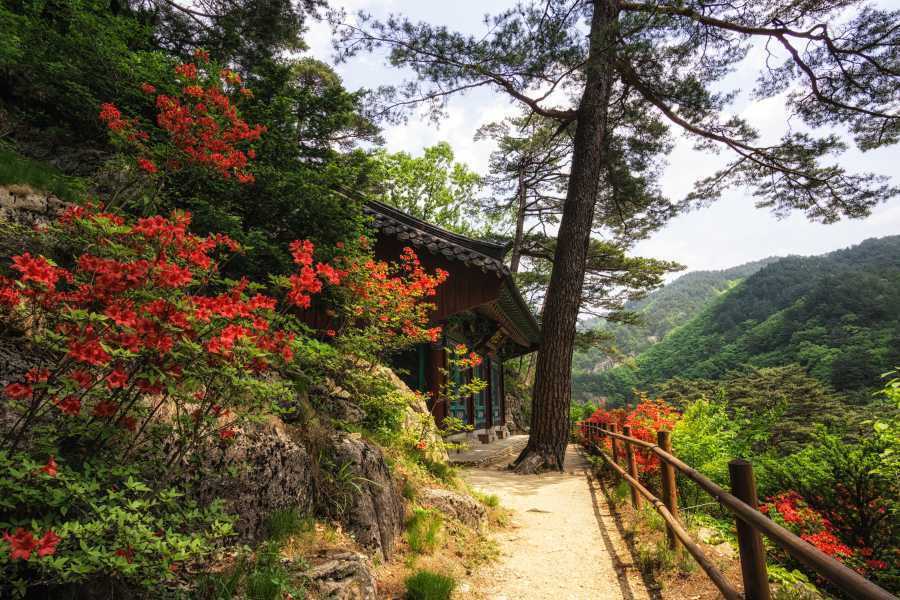
Mount Jirisan is the first national park of Korea, established in 1967. Up to now, Korea has a total of 20 national parks, of which 16 are located on the mountains, 3 on the seas, and 1 in history.

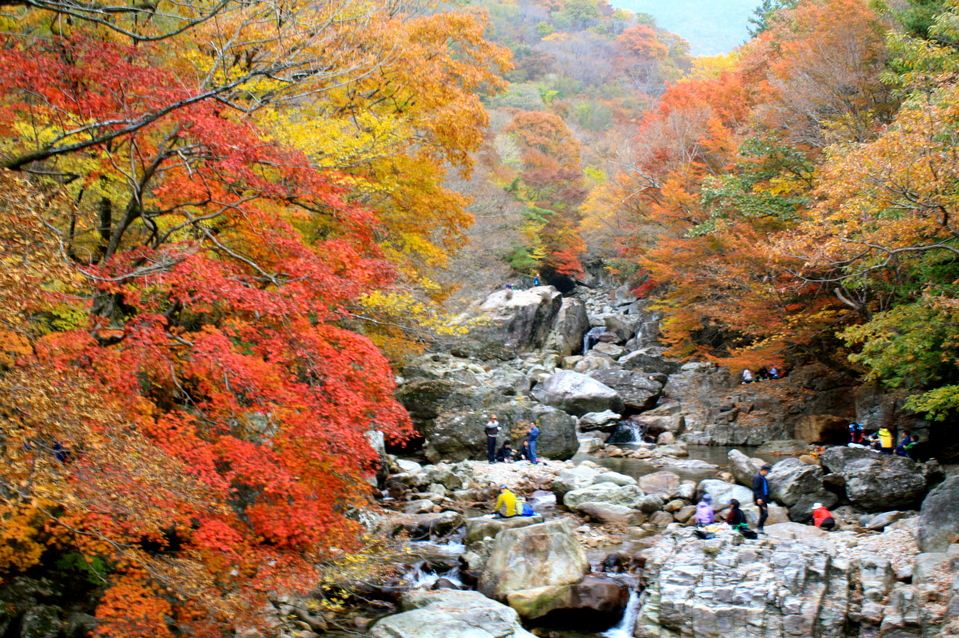

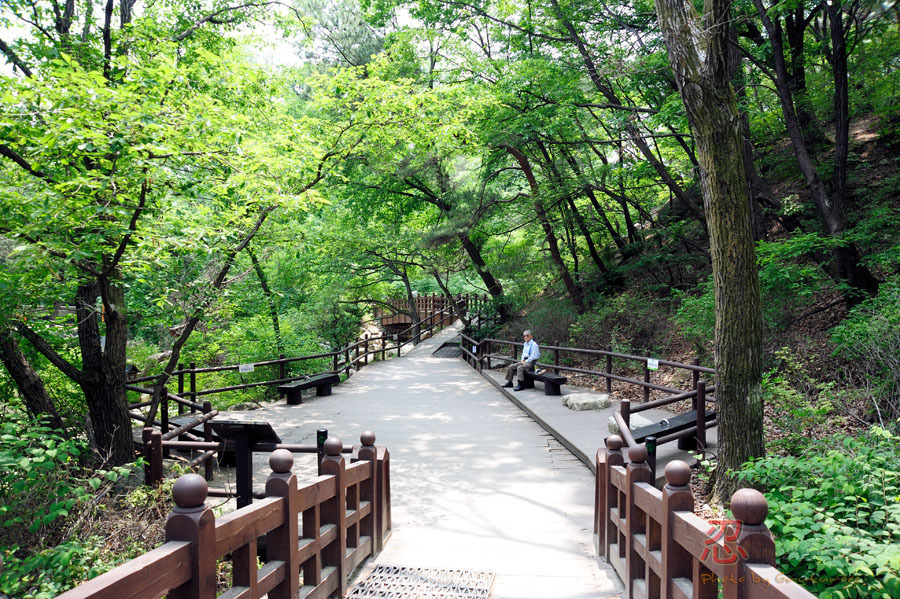
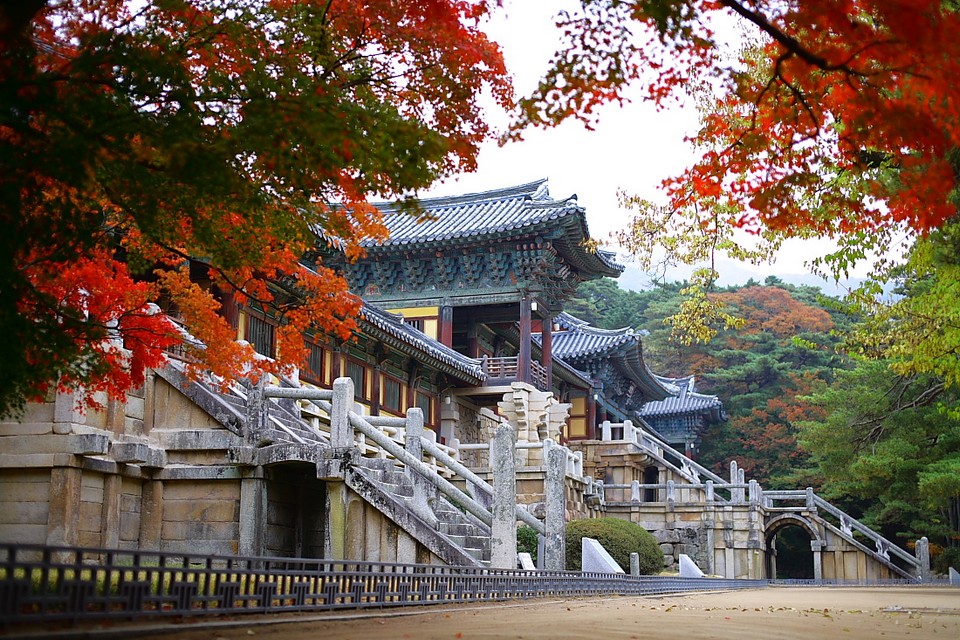
The tasks of Korean national parks
1. Research and explore natural ecosystems and natural/cultural landscapes.
2. Conserve and develop of wildlife groups.
3. Monitoring the changes in the natural environment as well as changes in weather.
4. Providing tourism services and the type of sound tourism culture through the development and practice of various types of translation.
5. Preventing harmful effects to nature and illegal acts of abuse.
6. Implementation and provision of projects related to the national park.
7. Safety management for tourists and properties of national parks.

Best national parks in South Korea: Jirisan National Park (Mountain)
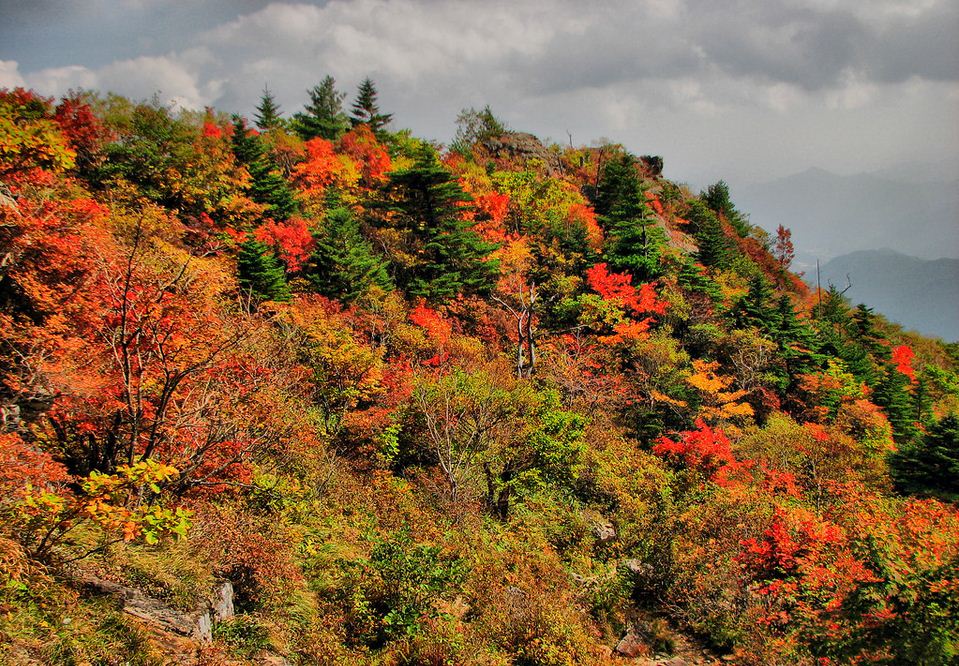
Jirisan was the first national park to be accredited in Korea in 1967. Jirisan is known as one of the largest and tallest mountain in Korea, its peak spreads across 4 districts in 3 provinces: Hadong, Hamyang, Sancheong of Gyeongnam Province, Gurye Region of Jeonnam Province and Namwon of Jeonbuk. Therefore Jirisan National Park is also the largest national park on the mainland of the land of kimchi. Especially in the fall, the national park always attracts thousands of tourists because the scenery is the most beautiful in the 4 seasons. The trees in Jirisan National Park in the fall will transform their leaves together to create a romantic natural landscape filled with a dreamlike bright yellow. Besides, Jirisan National Park is considered the most beautiful sunrise spot in Korea, so visitors can visit here in the early morning to admire the first rays of sunshine in the national park and don’t forget to capture those wonderful moments by your photos.
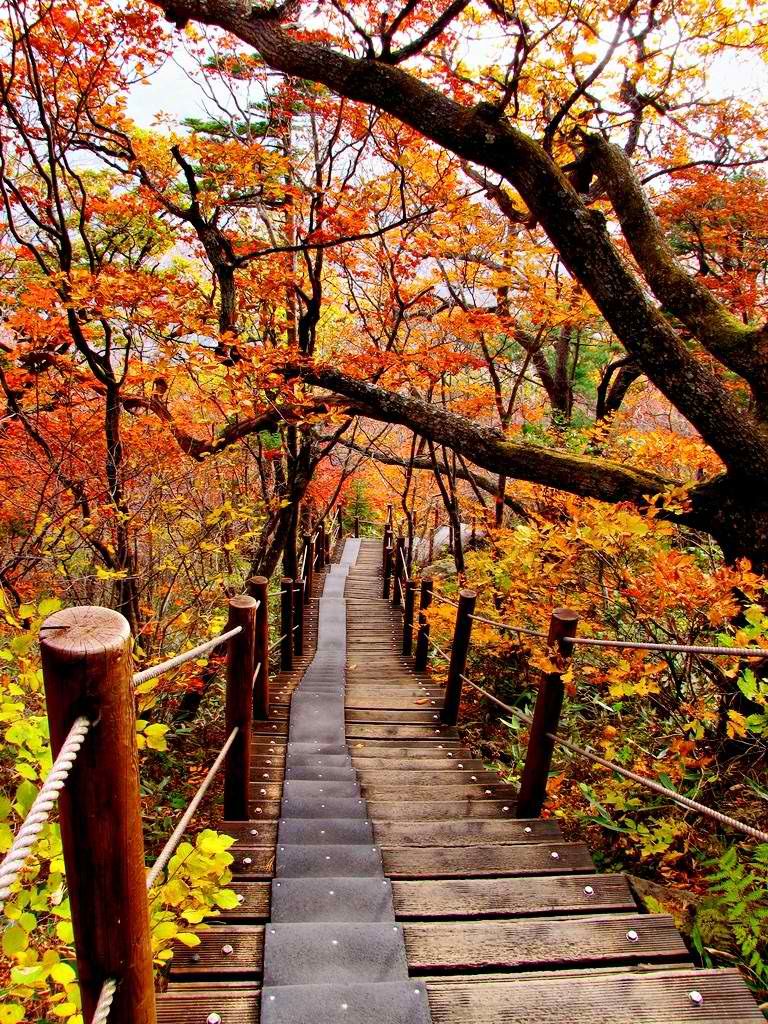
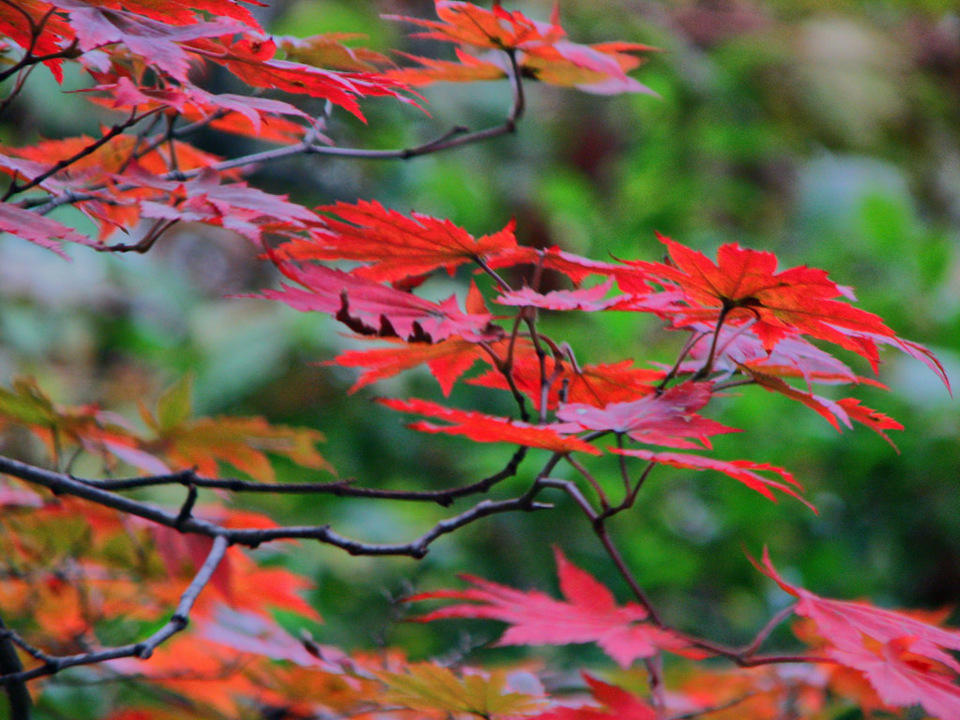
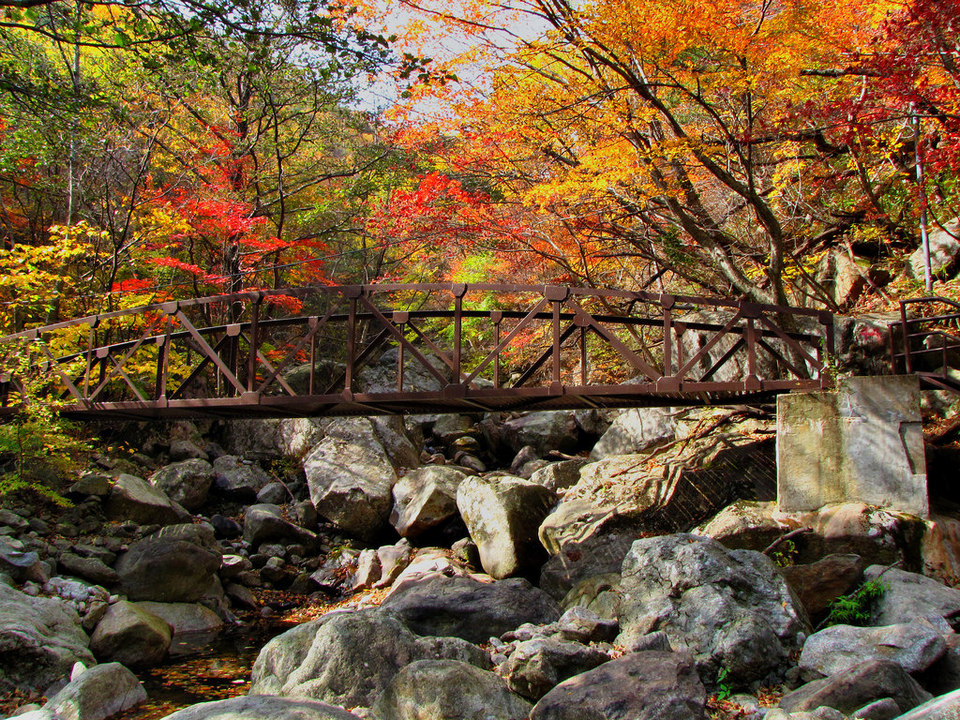
Here, there is Cheonwangbong Mountain (1,915m high), the third highest mountain in the Korean peninsula, after only Baekdusan and Hallasan. There are also other high mountains, like Banyabong and Nogodan and some famous temples such as Hwaseomsa, Ssanggyesa and Silsangsa. The beautiful Seomjigang River also flows through Gurye and Hadong at the foot of Jirisan Mountain before emptying into the South China Sea.
Jirisan National Park is home to a rich flora and fauna. In particular, the park is a well-known Asian black bear conservation area. Following the trails in the park, you can both enjoy the fresh air and have the opportunity to explore the diverse ecosystems.
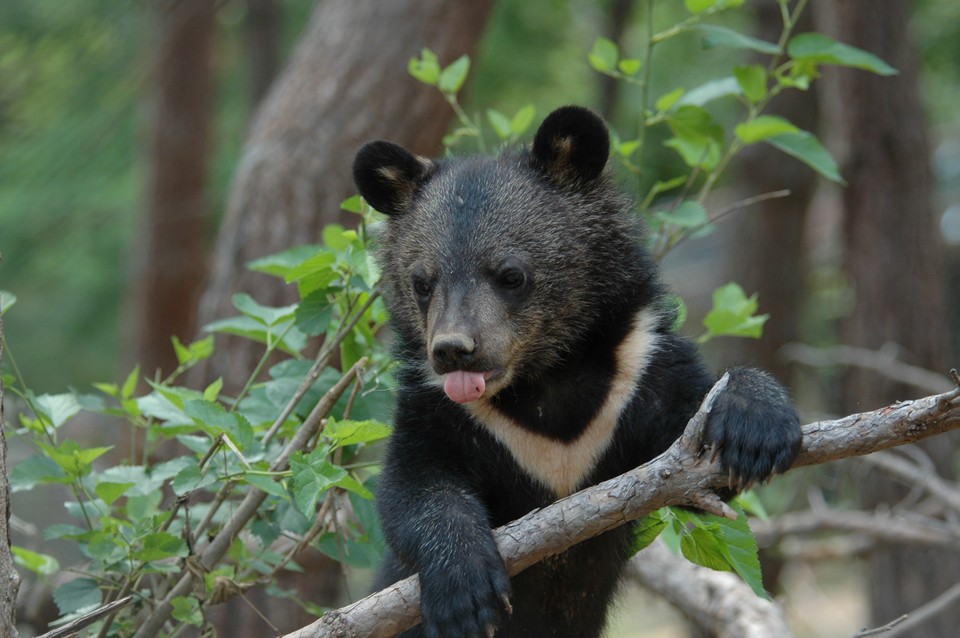
Refer to: Mountain Jiri Scenic Autumn Day Tour from Busan.
Address: Daeseong-ri, Hwagae-myeon, Hadong-gun, Gyeongsangnam-do, South Korea
Phone: +82-55-972-7771
Website: http://jiri.knps.or.kr
Must visit national parks in Korea: Gyeongju National Park
Gyeongju is the second national park in Korea, and the only national park in history. Gyeongju National Park is divided into 8 areas with Tohamsan mountain, Bulguksa Temple, Seokguram Buddhist (Buddhist Cave) – the masterpiece of Buddhist culture, and Namsan mountain – as an open museum. There are about 700 tombs of kings and deities of Silla dynasty, many historical relics and cultural heritages, including Bulguksa Temple, Seokguram Buddhist Cave, Anapji, Cheomseongdae and about 1200 species of flora and fauna in the National Park in Gyeongju.

Gyeongju is the ancient capital of Korea, located about 400km from the Southeast of the city of Seoul. This is a historical land, where recording the stories, the proud imprints of the country of Korea. So, coming to Gyeongju, you will immediately feel like you have been back to the past, have just been immersed in the ancient atmosphere of the land of Kim Chi or learn about the proud history period under the Silla Age of Korea.
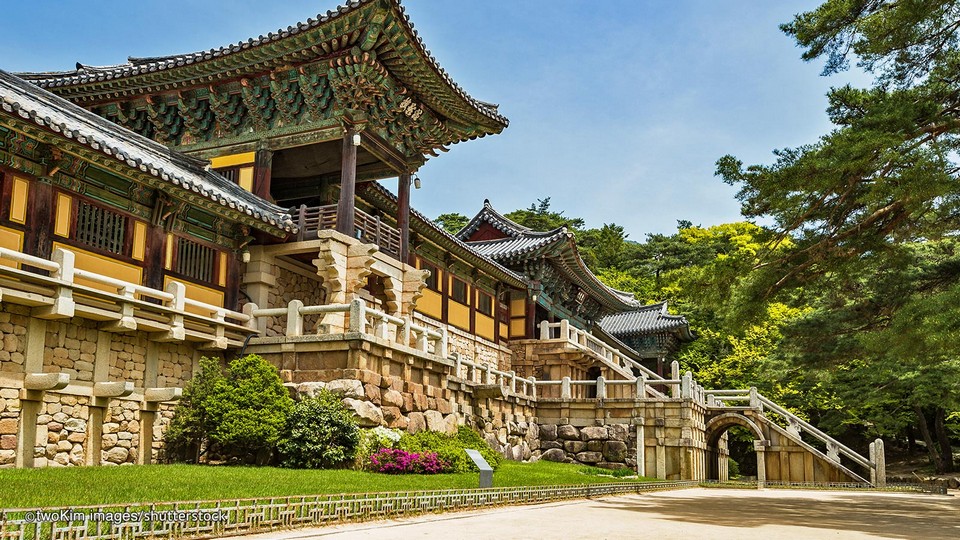
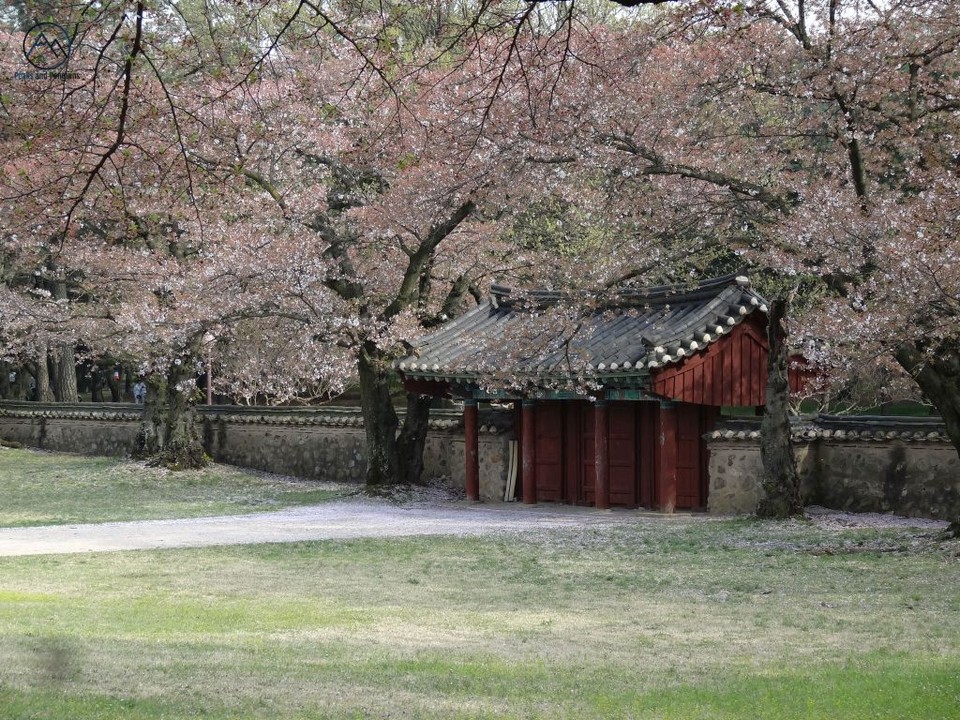
Refer to some best tours:
- Gyeongju UNESCO World Heritage Site, Seokgulam, Bulguksa Temple Day Trip from Busan
- A Day in Gyeongju by TK Travel
- Gyeongju Day Tour from Daegu
- Busan and Gyeongju Private Customized Tour
- Gyeongju Historic Sites Day Tour from Seoul
Address: 12 Cheonbungnam-ro, Bodeok-dong, Gyeongju-si, Gyeongsangbuk-do, South Korea
Phone: +82 54-778-4100
Website: http://gyeongju.knps.or.kr
Gyeryongsan National Park (Mountain)
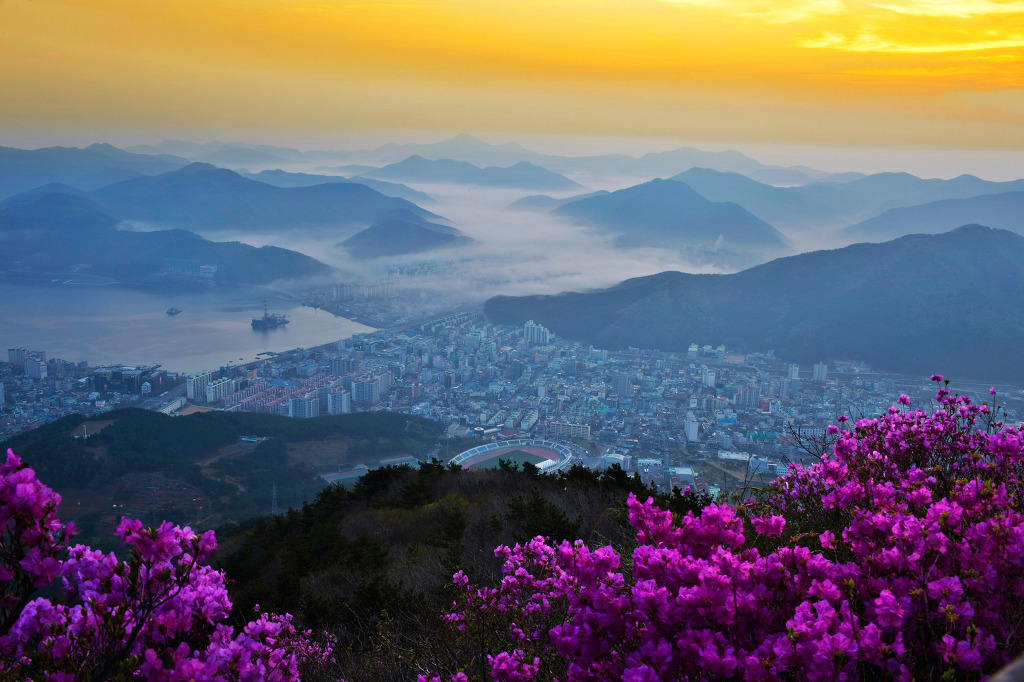
Gyeryongsan is a city national park, near the city of Daejeon. There are 3 famous temples: Gapsa, Donghaksa and Sinwonsa. Gyeryongsan is very famous with good its Feng Shui.
Address: Banpo-myeon, Gongju-si, South Korea
Phone: + 82-42-825-3002
Website: http://gyeryong.knps.or.kr
Hallyeohaesang National Park
Hallyeo-haesang is named after the first syllables of the name Hansando Island and the city of Yeosu. There are many beautiful islands and seascape stretching 200km between the two regions. Hallyeo-haesang National Park offers tourists a poetic landscape combining harmony between the sea and the island.
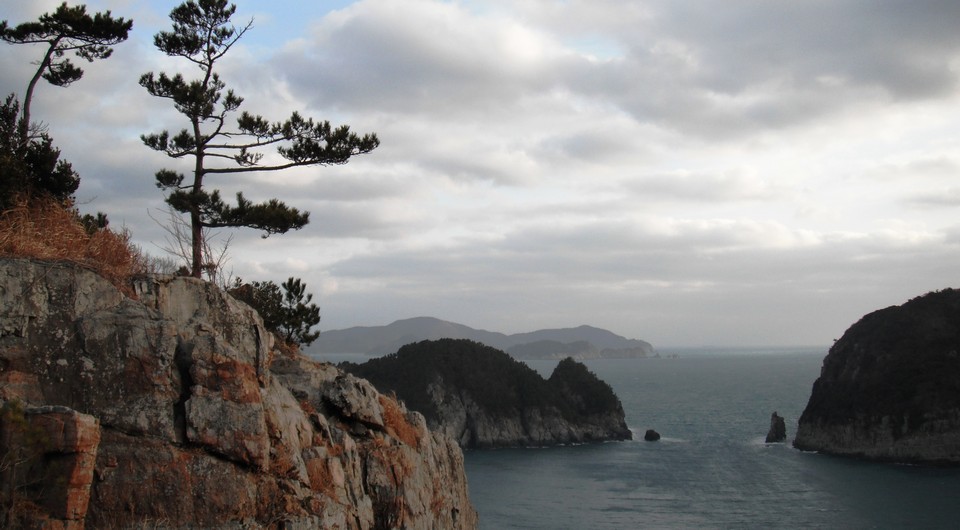
Address: Idong-myeon, Namhae-gun, Gyeongsangnam-do, South Korea
Phone: +82 55-860-5800
Website: http://hallyeo.knps.or.kr
Best national parks in South Korea: Dadohae-haesang National Park (Sea and island)
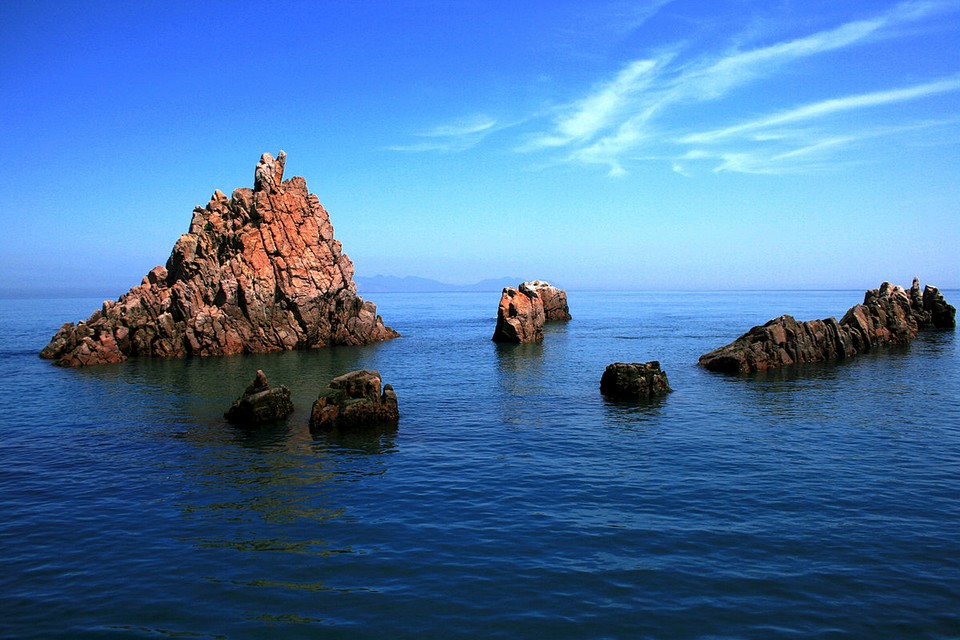
In Korean, Dadohea means the sea has many islands because Dadoheaheasang National Park is made up of about 1.700 small islands, extending from the coast of Yeosu to Hongdo, Heuksando, Geomundo and Beakdo. Dadohea Haesang attracts visitors by its natural beauty and rich flora and fauna including over 1.500 species of trees, 140 species of birds and more than 150 different species of fish. Dadohea Heasang National Park will be a great choice for those who want to immerse themselves in nature, both enjoy the sea air and immerse yourself in the air of the mountains. Thanks to the warm ocean climate, so although Dadohea Heasang is a island, Dadohea Heasang still possesses broad canopy forests, especially the most popular attraction here is the magnolia forest on Gwanmeado Island. This is a wonderful gift that nature offers to this coastal national park.

In the marine national park area, there are about 350 islands, including famous islands such as Heuksando, Bogildo, Cheongsando, and Geomundo next to Hongdo Island – dubbed the natural monument, representing all islands in South Korea. Warm ocean climate has created broadleaf forests covering the islands. The broadleaf forest in Mirari on Soando Island, Matchi Forest on Yejakdo Island, and magnolia forest on Gwanmaedo Island are considered natural monuments.
Address: 446-1 Geumo-ro, Nam-myeon, Yeosu-si, Jeollanam-do, South Korea
Phone: +82 61-666-3474
Website: http://dadohae.knps.or.kr
Best national parks in South Korea: Seoraksan National Park (Mountain)
With a total area of 398.539 km2, in 1982, Seoraksan National Park was designated by UNESCO as a Biosphere Reserve in Korea. Seoraksan National Park has a total of 30 mountains spread across its area. This is also a strong point to attract tourists to this place. In the fall, each group travels together to climb mountains, enjoy the cool atmosphere, and admire the scenery of the trees changing their leaves from above, which are great experiences that anyone wants to try at least once in a lifetime. In addition, interesting tourist attractions when coming to Sdeoraksan National Park are: Biryong waterfall – this is a natural waterfall that is strictly protected by local people, even a stone is not allowed to be taken nor bathing or thow garbage to protect water sources; Baekdamsa Temple – visitors can come here to enjoy the sacred, ancient atmosphere from this ancient temple; … Seoraksan National Park will be a great choice for the autumn trip of visitors to this dreamy land of kimchi.
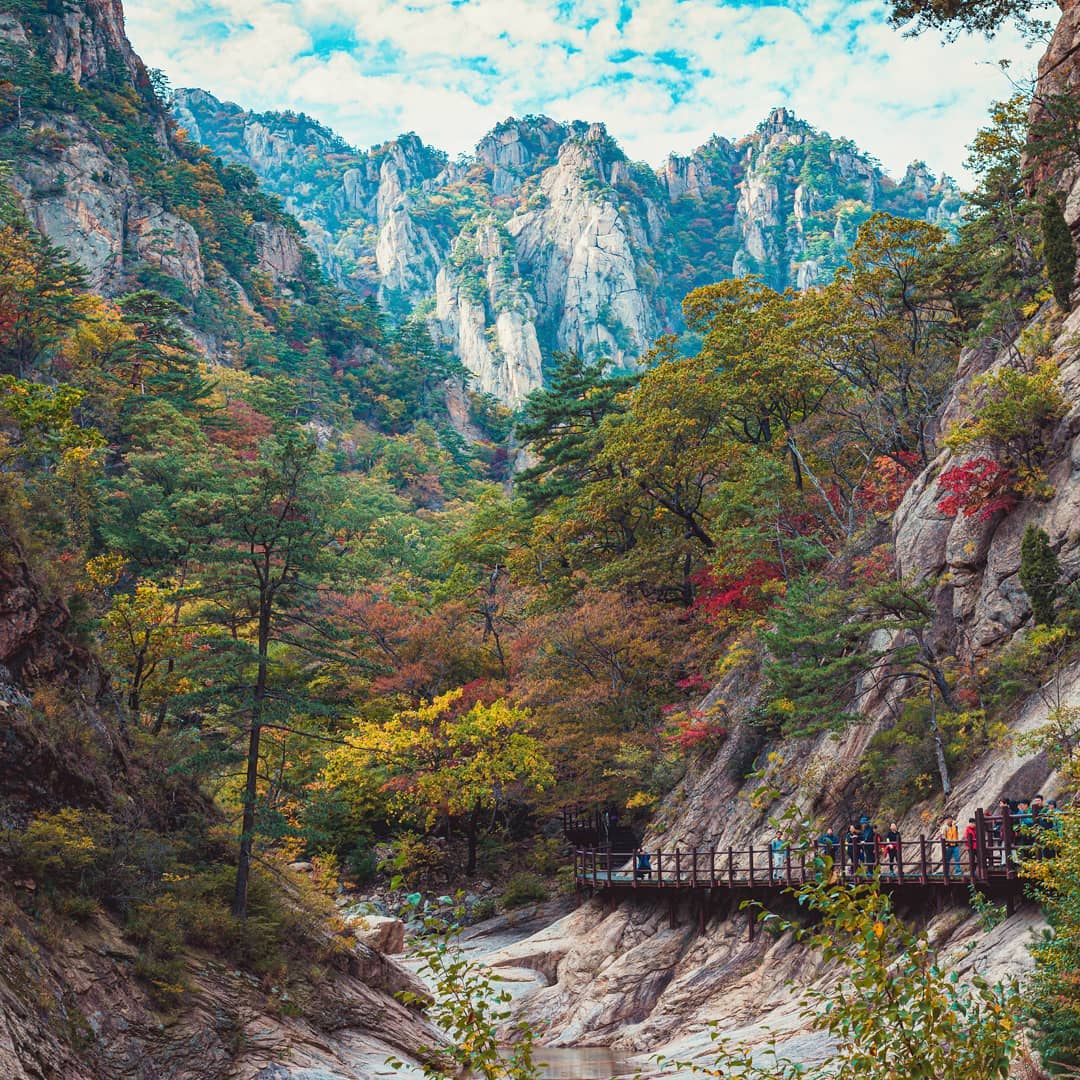
Seoraksan is proud to be the most ideal geographical location in Korea with beautiful autumn leaves forest. Seoraksan National Park is divided into Naeseorak, Namseorak, and Oeseorak areas corresponding to the West, South and East directions separated from Daecheongbong Mountain (1.708m high) in the central. There is also Bongjeongam Temple located at an altitude of 1.224m, and Baekdamsa Temple where the Yongwoon Han monk once lived. It is possible to travel by cable car from Seorakdong area.

Refer some best tours:
- Seoraksan National Park Autumn Day Tour from Seoul by KTOURSTORY
- Mt. Seorak + Naksansa Temple Tour by KTOURSTORY
- Seoraksan National Park Autumn Season Day Tour from Seoul by World Love Travel
- Seoraksan National Park and Hongcheon Ginkgo Forest Day Tour from Seoul
- [Limited Offer- 10% Discount] Seoraksan Autumn Day Tour from Seoul (Cable Car Included)
- Seoraksan National Park Autumn Day Tour from Seoul by KTOURSTORY
- Nami Island & Mt. Seorak Day Tour by KTOURSTORY
Address: South Korea, Gangwon-do, Sokcho-si, Seoraksan-ro, 833 KR
Hours: 9 AM–6PM
Phone: +82 33-801-0900
Website: http://seorak.knps.or.kr
Top Korea national park: Bukhansan National Park (Mountain)
Bukhansan National Park has an area of 79.92 km2 and was established in 1983. This garden is located adjacent to Seoul and Gyeonggi, in which the entire mountain area of Bukhansan has accounted for nearly 13% of area of Seoul. The highlight of this national park is the majestic granite mountains, this place always attracts a large number of visitors who want to experience the feeling of climbing and watching the scenery of Seoul from above. Besides, the forests in the national park are also very large, create the extremely diverse of flora and fauna here. With more than 1.300 species living in the forests, Bukhansan National Park always brings visitors interesting experiences about nature, learn about wildlife in this vast national park. In Bukhansan National Park, there are many ancient temples, you can come here to enjoy the quiet atmosphere under the cover of nature to immerse yourself in the fascinating natural life in Bukhansan. As the national park closest to Seoul, Bukhansan will probably be the best choice for those who do not want to go far but still want to find the pristine nature in Korea.
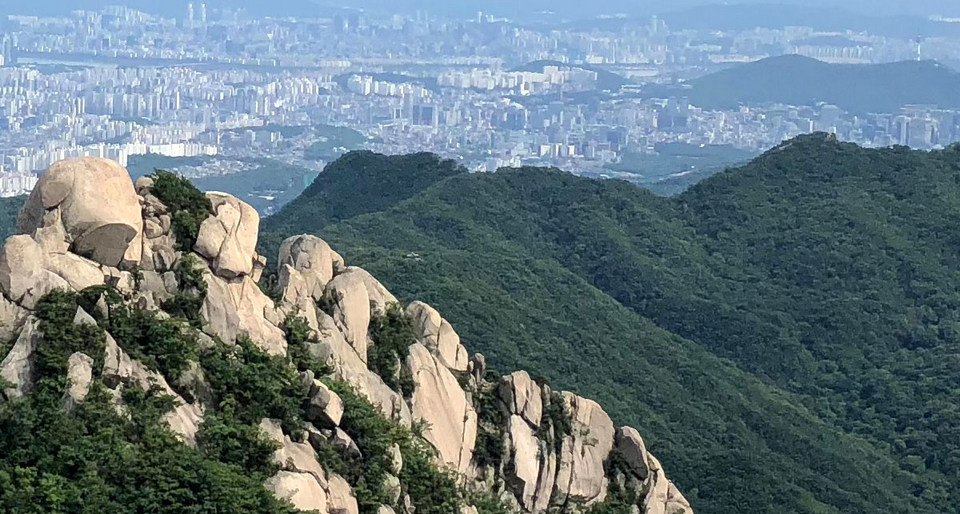
Bukhansan is divided into two areas: Bukhansan and Dobongsan, based on the contour of Uiryeong hill. Previously there were the mountains Baekundae, Mangyeongdae and Insubong, later there were Seoninbong and Jaunbong. The national park is listed in the Korean Guiness Book of Record, with the largest number of tourists in the National Park (the number of tourists per area of the national park is 5 million each year). There are several temples of high cultural value, such as Doseonsa, Jingwansa, Mangwolsa, and the remains of the old Bukhansan castle. The recently opened footpath network around the foot of the mountain is very popular with the elderly, children and people with disabilities.

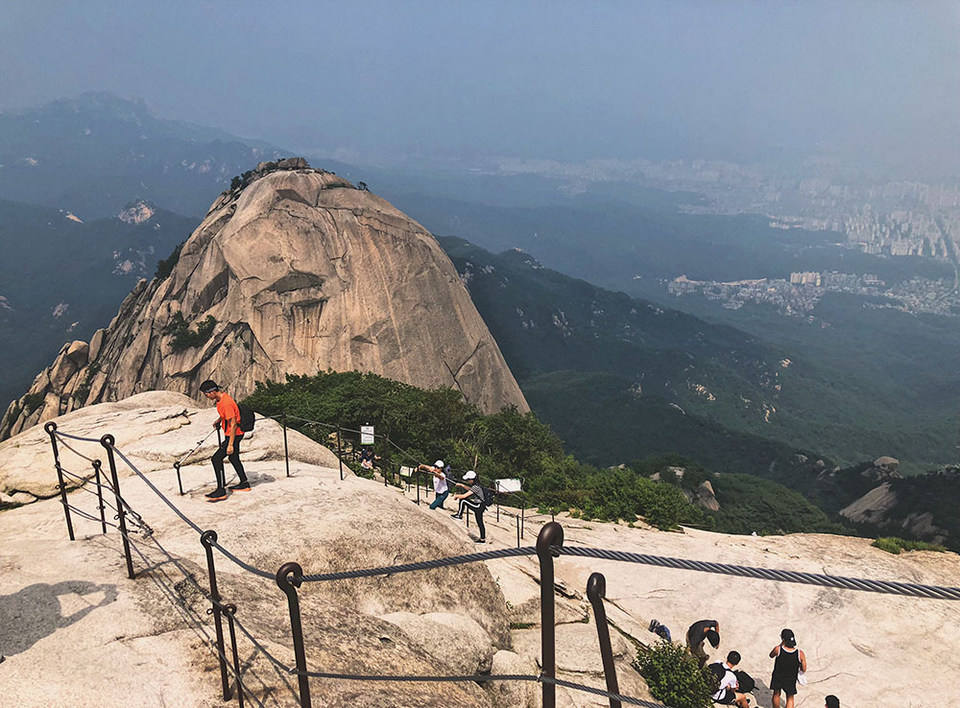
Address: 262 Bogukmun-ro, Jeongneung-dong, Seongbuk-gu, Seoul, South Korea
Hours: 4 AM–5PM
Phone: +82 2-909-0497
Website: http://bukhan.knps.or.kr
Best national parks in South Korea: Hallasan National Park (Mountain)
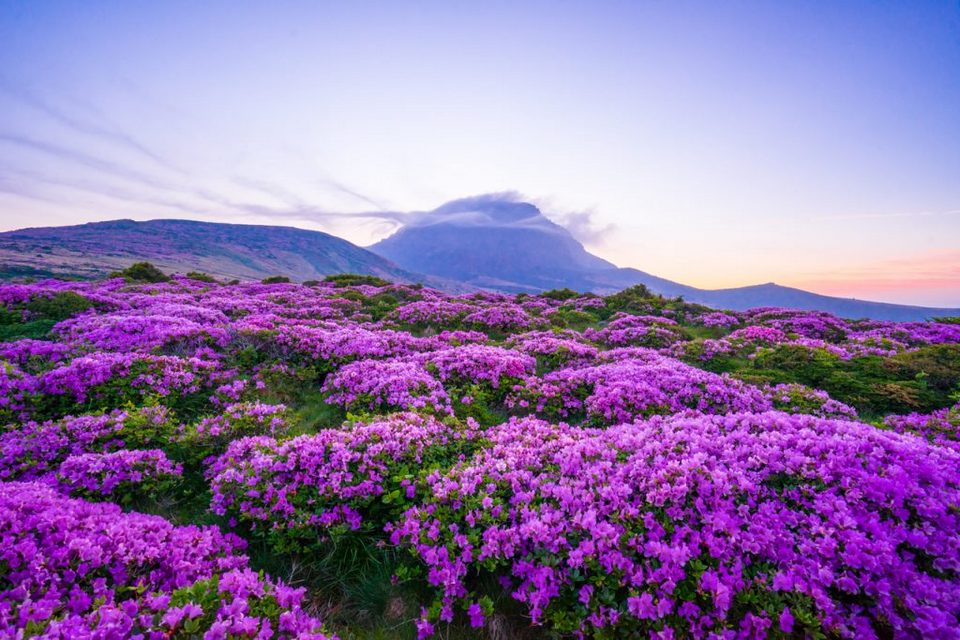

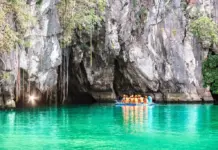






























![10 best airports in Asia in 2016 [RANKED] kuala-lumpur-international-airport-best airports in asia in 2016 by skytrax ratings](https://livingnomads.com/wp-content/uploads/2016/08/29/kuala-lumpur-international-airport-best-airports-in-asia-in-2016-by-skytrax-ratings-218x150.jpg)








